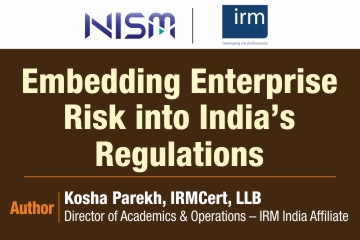Author: Denny B Justin
Before looking into bonds, it is essential to know what Fixed income is. It is an investment that generates a predictable and fixed return in the form of interest or dividend payments at regular intervals. Bonds are considered fixed-income securities due to the predetermined and fixed payment structure they offer to investors. They provide a steady and regular income stream through interest payments. Bonds represent a fundamental component of the global financial market, serving as an essential tool for governments, corporations, and investors. A bond is a debt instrument where the issuer borrows funds from investors and promises to repay the borrowed amount, along with periodic interest payments, over a specified period.
Bond markets offer a wide array of bonds with varying risk levels, maturities, and yields. This diversity allows investors to construct a balanced and diversified portfolio. Government bonds issued by national governments are often considered the safest as they are backed by the government’s ability to levy taxes. Municipal bonds are issued by local governments, typically to fund public projects, and may offer tax advantages. Corporate bonds are issued by companies to raise capital, providing higher yields but with varying levels of risk. Moreover, there are also asset-backed securities (ABS) and mortgage-backed securities (MBS) that represent pools of underlying assets, such as mortgages, packaged as tradable securities. Stocks have perpetual existence until sold, while bonds have a fixed maturity date when the principal is repaid, delineating a clear difference in their durations and obligations.
Bond markets operate by primary and secondary markets. The newly issued bonds are traded in the primary market and provide entities with the means to raise capital. The secondary market enables the trade of pre-existing bonds among investors, where prices fluctuate based on market conditions, prevailing interest rates, and perceived risk associated with the bond issuer. Based on maturity period, there are three types of bonds: Short-Term Bonds, Intermediate-Term Bonds, and Long-Term Bonds. Short-term bonds have a maturity period typically ranging from less than a year up to three years. They are commonly known as short-term or money market bonds and are often issued by government entities or corporations seeking short-term funding. Examples include Treasury Bills (T-Bills) and Commercial Papers. Intermediate-Term Bonds’ maturity periods range from four to ten years. Intermediate-term bonds offer a mid-range duration. They balance short-term and long-term investments, offering a moderate level of risk and potential returns. Some Indian examples include Medium-Term Notes (MTNs) and Corporate Bonds with intermediate maturities. Long-Term Bonds: These bonds have maturity periods beyond ten years, offering a more extended duration for investment. Long-term bonds are suitable for investors with longer investment plans. In India, examples of long-term bonds include Government Securities (G-Secs) with longer maturity periods and Infrastructure Bonds.
The yield represents the return on investment for a bond and is influenced by its price, coupon rate, and maturity. To calculate yield, we must look from a different perspective. There is a reward for a fixed deposit called the interest rate of deposit. Yield can be said to be the interest rate of a hypothetical bank having the same net outcome of the bond after maturity. The yield curve is a graphical representation of yields for different maturities that helps investors gauge the state of the economy. The yield curve has a positive slope at the beginning and subsequently decreases over time due to the time value of money. When interest rates rise, the value of existing bonds decreases as newer bonds offer higher yields. Conversely, falling interest rates increase the value of existing bonds.
Stock vs Bond vs Deposit
The market dynamics for stocks are driven by economic and company-specific factors, while interest rates, issuer credit quality, and market demand influence bond values. Bond markets are the only market which could withstand the 2008 financial crisis. Many companies and banks were shut down during the era. The bond market had the least effect by the 2008 financial crisis, the yield had increased dramatically by 20% even after low rated bonds were called off. During this time with the results being the all-time high for junk bond defaults. High-rated bonds can generate income even in huge financial crisis. Bond market earnings graphs are straight with less slope than the stock market, which is highly volatile and unpredictable. Looking back on the last 30 years of S&P 500 and US Treasury Bonds, the earnings of the bond and equity markets are the same. The start points and endpoints are approximately the same, even after the violent ups and downs of S&P. But when the equity dividends were re-invested, the stock earnings tripled. This shows that in the long term, investing in bonds will generate a small impact despite being the least risky.
Bonds are preferred over depositing when the yield rate exceeds the interest rate. The time value of money is the other component that hunts bonds. Investing in a bond for five years is not the same as investing in the same bond for a 30-year maturity. There are three significant reasons: the yield rate cannot be changed, inflation, and the net present value decreases. The interest rate changes from time to time, increasing and decreasing. During 30 years, the interest rate will increase due to monetary policies and subsequently, it can exceed the interest rate. This will create losses for bond investors, making the bond market a risky place to invest. Yield rates are independent of inflation rates. This gives a high possibility of the inflation rate crossing the yield rate. Net present value modelling of the returns shows the risk factor associated in investing in long-term bonds.
Overall, the bond market plays a significant role in diversifying investment portfolios, offering a range of options to suit various risk appetites and investment strategies. It provides an avenue for investors seeking stability and predictable returns, making it an essential component for a balanced and diversified portfolio. Short-term bonds offer lower risk and are well-suited for investors seeking stability and liquidity, while long-term bonds, though offering higher potential returns, come with increased risk, making them a more challenging investment option. Understanding the differences between short and long-term bonds is crucial for investors looking to optimize their portfolio’s risk-return balance.
Subscription Subscribe to our newsletter and receive a selection of cool articles every weeks

When people hear the term “risk management,” they often associate it with financial markets, insurance, or corporate governance. In…

As India charts its course towards Viksit Bharat, by 2047, the sophistication and depth of its financial markets are paramount.…

As investors, we often judge performance on monthly (MoM), Quarterly (QoQ) and year-on-year (YoY) statistics. It feels natural to look…